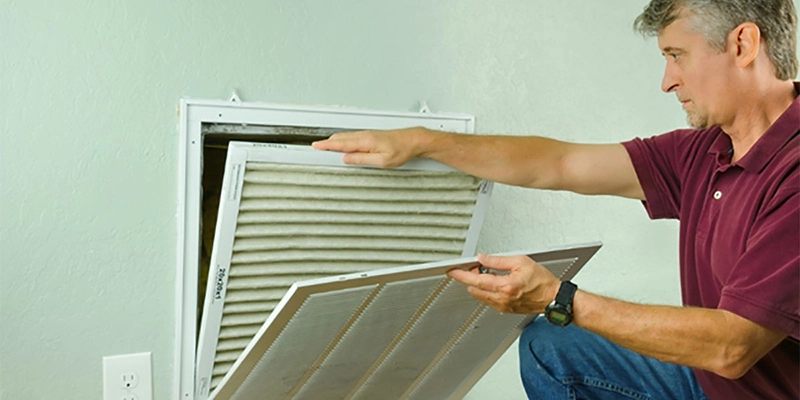
Year-round allergy issues? It could be your indoor air quality. How can you tell if your family is at-risk?
How to Tell if You Have Poor Indoor Air Quality
You can often determine air quality by the health of a building’s occupants. If you or any of your family members frequently experiences congestion, sneezing, coughing, watery eyes, headache, and frequent nosebleeds, pay close attention to the onset of these symptoms. While it can be tempting to point a finger at changes in the weather and ‘allergies,’ if these symptoms pop-up shortly after arriving in your home or office, this could be a sign of poor indoor air quality. In today’s tightly sealed buildings, the air inside can be far more polluted than the air outdoors. Add in asbestos, toxic mold spores, and the off-gassing of various hazardous chemicals, from cleaners to furniture, and the health consequences can be far more extreme, escalating to chronic sickness, fever, chills, fatigue, nausea/vomiting, muscle pain, dizziness, rashes, and shortness of breath.
Other Signs You Have Poor Indoor Air Quality
Like your body, your home may also be giving you signs it’s not doing so well. What evidence in your home points to poor indoor air quality?
- Significant Dust Buildup Around Vents & On Home Surfaces
If you have excess dust buildup around your house and marring the area around air vents, you likely have an air quality problem that needs to be addressed. In the very least, the buildup of pollen, dust mites, pet dander, and other highly-allergenic particulates is aggravating your allergies, and may easily be addressed with an air filter upgrade or HEPA filtration system add-on. - Inconsistencies in Air Distribution
Cold and warm spots in your home, indicative of air distribution issues, may also point to indoor air quality issues. If your HVAC system isn’t maintaining proper temperature and humidity levels, your indoor air quality is likely suffering the effects of this. Glass Doctor Recommends Home Window Tint in some instances to help combat this issue, as well as to help curb the need to rely on your HVAC system for comfort control, reducing the distribution of dust, pollen, mold, bacteria, and other pollutants throughout your home. - Humidity Issues
The right level of relative humidity, somewhere between 35-50%, is ideal to ensure comfort and prevent microorganism growth. Too little humidity, and your body (and home) can suffer the unfortunate effects of such dryness: Dry/itchy skin, eyes, sinuses, and increases in upper respiratory infections; warping to furniture and structural components. Too much humidity, and your home becomes a prime location for mold, mildew, and microbe growth. Fortunately, these problems can be easily remedied with the addition of home humidifiers and dehumidifiers. - Mold & Mildew Growth
Mold and mildew growth usually accompanies high relative humidity levels and poor air circulation in the home. A telltale musty smell is often apparent in homes with mold issues, alongside green and black (mold) spots on surfaces, particularly around sinks, tubs, and other areas that are frequently exposed to moisture/water. - Unpleasant Odors
Unpleasant odors from mold/mildew growth, pest infestation, chemicals, or the decomposition of dirt/dust/debris on surfaces in your home all point to indoor air quality issues. Though it’s easy to become accustomed to the ‘smells’ of your home, these odors will be more apparent after you’ve returned from a week away.
Improving indoor air quality should be a priority of every homeowner. Clear the air with the help of Aire Serv® today.
 Click to call
Click to call
